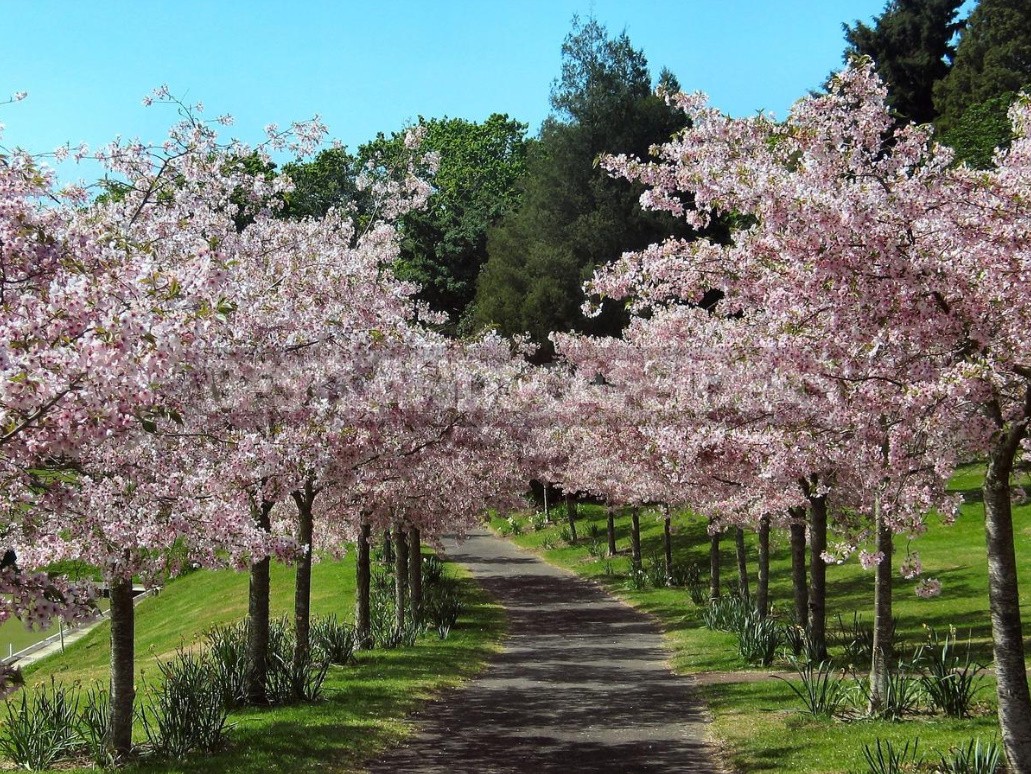
Flower crops for planting in tree trunks
The garden was filled with flowers gradually, taking up shady places where vegetables could no longer fully grow. Now, almost under every tree and between the berry bushes, where there is space and light, flowers have settled, forming mini-gardens of continuous flowering, each different from the other. There are not so many types of flower plants, but they are selected unpretentious ones that can be partners for all the others.
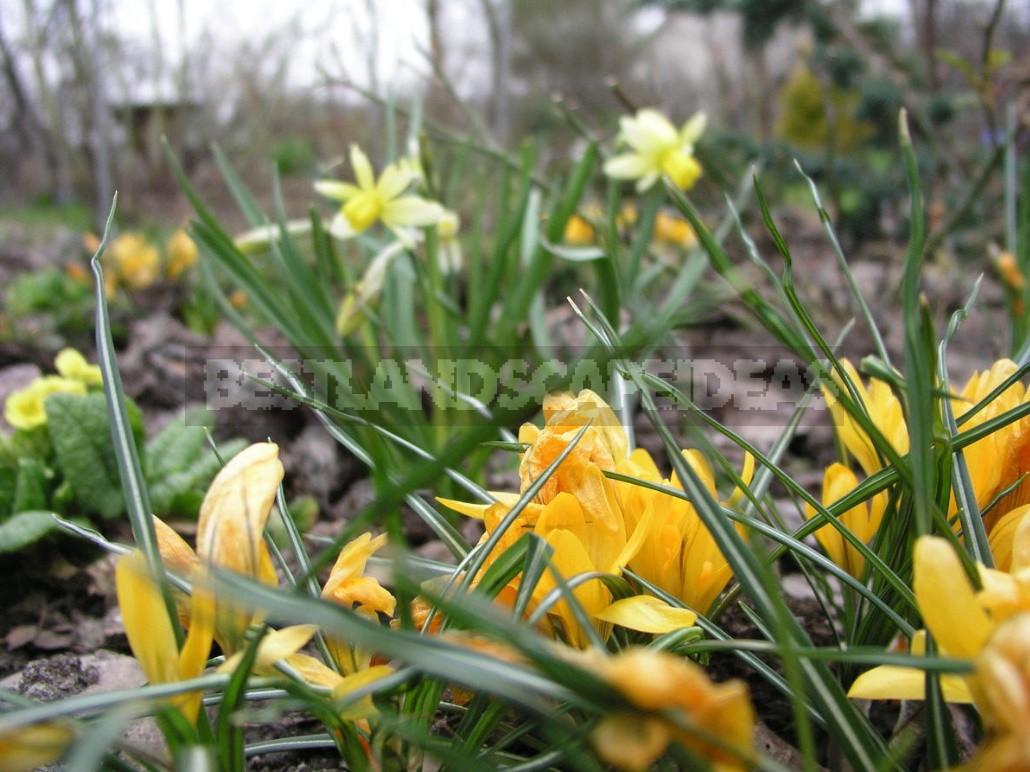
The very first spring awakens Crocus, Galanthus, Chionodoxa, Scilla. The tracks are framed by Primula of different types and colors and Bellis. Then Narcissus and early Tulipa bloom, arranged in groups in different parts of the garden. Blue Muscari border the mini-flower beds, surrounding Bergenia and white Fritillaria. Viola tricolor pleases the eye everywhere, they move independently around the garden by self-seeding.
Every year, new types of perennials appear in the garden, which fit neatly into the remaining gaps in the flower beds. We were all struck by the gigantic size of the leaves and the height of Inula helenium, the seeds of which someone gave without warning about its gigantism. But its thread-like Golden petals and dense core of baskets, which attract butterflies and bumblebees, have been pleasing to the eye since mid-July and unusually decorate the garden. Inclusions of Potentilla with bright yellow flowers and Geum hybrida with scarlet flowers also noticeably enlivened the flower beds.

I would like to say a special word about Tanacetum parthenium, which has magnificent garden forms up to 70-100 cm high, with double inflorescences. They are more like small-flowered chrysanthemum bouquets, but botanists say that it is still Pyrethrum. The snow-white lingual flowers of the outer rows are replaced by yellowish ones that surround a small light yellow center with tubular flowers.
No less interesting is another garden form of Pyrethrum— with a convex center of white tubular flowers and white ligules around it. And the most refined form can be called a similar structure, but the color of ivory, while the marginal flowers are straight and arranged around the center with gaps, which gives the inflorescences a special charm.

Pyrethrum is a biennial that blooms profusely throughout the season: first, the early seedlings of the previous year, and in the second half of summer, the grown-up specimens have time to bloom. In July, the matured seed heads can be crushed in any free place, often by the fall they germinate, in the spring they are planted in a permanent place, and the cycle of flowering continues.
These profusely blooming lush bushes seem to scatter pearly white light in all corners of the garden, especially effectively highlighting the dark areas under the dense crowns of old trees. They can be painlessly transplanted in a blooming state to any place that requires immediate beauty. Pyrethrum can live in containers and create mobile compositions with the same container Viola, Gazania Petunia, Lobelia, Tagetes, etc. And another of their advantages should be noted: cut in full bloom and dried in bundles heads down, they will make an excellent basis for the composition of dried flowers, preserving the whiteness of the flowers and the openwork structure of the Bush.
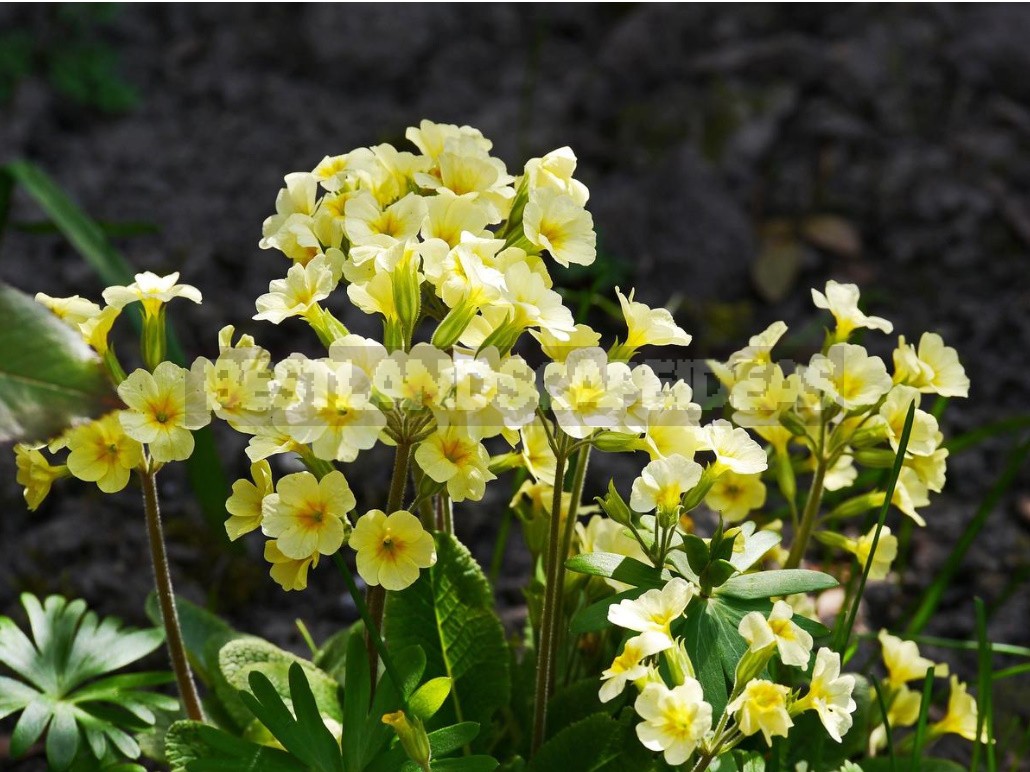
Primula vulgaris, Crocus vernus, Iris germanica have been growing together in my garden for many years under the crown of a root-bearing plum. these species occupy the space from the path to the plum trunks in three lines. On the North side, several Phlox paniculata bushes with white and pink flowers are placed, in the middle of the square – Oenothera fruticosa, Ornithogalum, Dicentra formosa (low).
The southern part of the flower garden is occupied by curtins Muscari and Geranium pratense with Geum rivale (the last two species are wild, they bloom very profusely and successfully fill the pause in flowering in June). This set of plants provides flowering from April (Crocus) to October (Phlox paniculata).

There is a small trick in prolonging the flowering of Phlox: if at the very beginning of its flowering, cut several stems into bouquets,then new sprouts grow from the axillary buds, which bloom at the end of summer and continue to bloom until frost. Removing ovaries with seeds of Lychnis, Lupinus, Aconitum and other flower plants can significantly prolong their flowering.
Under the old Apple tree in the trunk square, Primula vulgaris and Primula sieboldii get along perfectly, blooming later than all Primula-almost until the end of June; they serve as the border of the flower garden. The second line behind the milky-yellow Primula vulgaris grows Narcissus poeticus, both species bloom simultaneously in late April – may (according to the weather). At the end of June, a large bright Papaver orientale blooms, growing in the center in front of the Apple tree trunk.

On the North side of the mini-flower garden closes the line of low-growing Astilbe with inflorescences of white and ruby color, blooming in July. The Western part of the square is occupied by a tall astilbe Bush with apricot-colored inflorescences, which is effectively set off by a decorative grass-Phalaris arundinacea with variegated foliage and high stems with elegant panicles of flowers. Inula helenium also settled here with large, Crescent-shaped leaves and numerous baskets of Golden thread-like outer petals (lingual flowers) and Central tubular ones that turn brown in August.
Inside this square are several Centaurea montana bushes with large blue inflorescences that bloom in June, as well as tall Symphyotrichum novi-belgii and Helenium autumnale. These species bloom later than all: in August – October. There was also a place for a low Symphyotrichum dumosum with a beautiful spherical crown and a Erigeron, blooming in July and August with lilac – pink inflorescences-baskets.
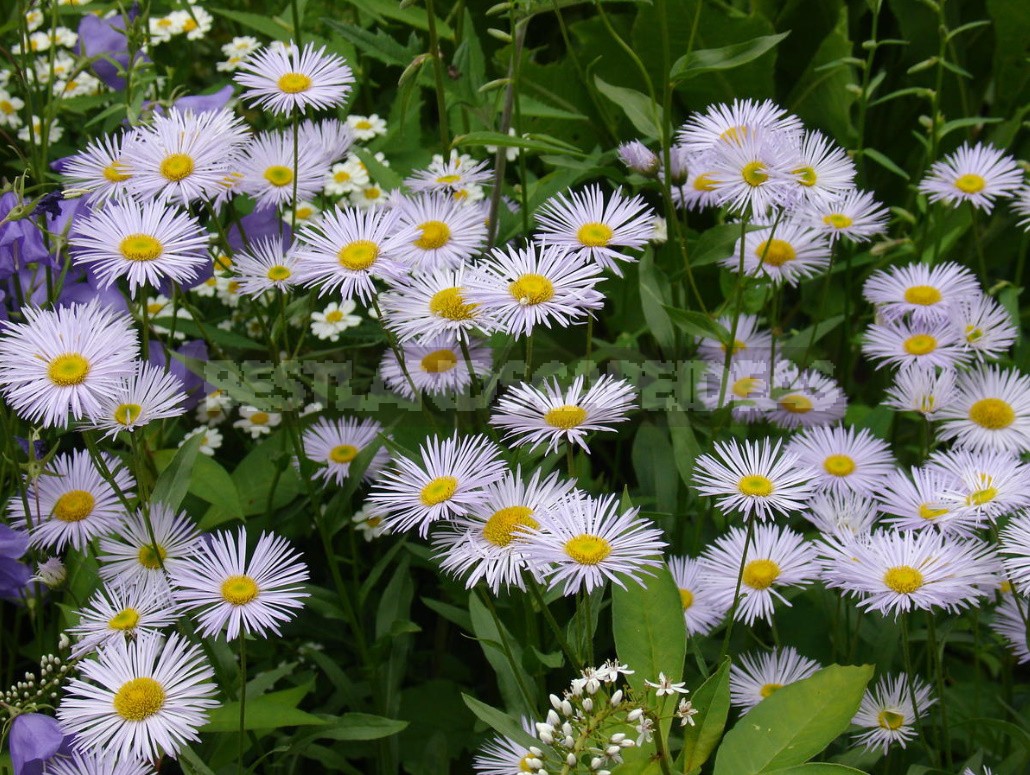
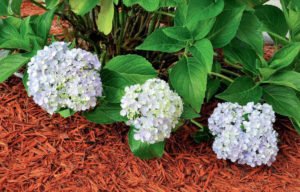



Leave a Reply